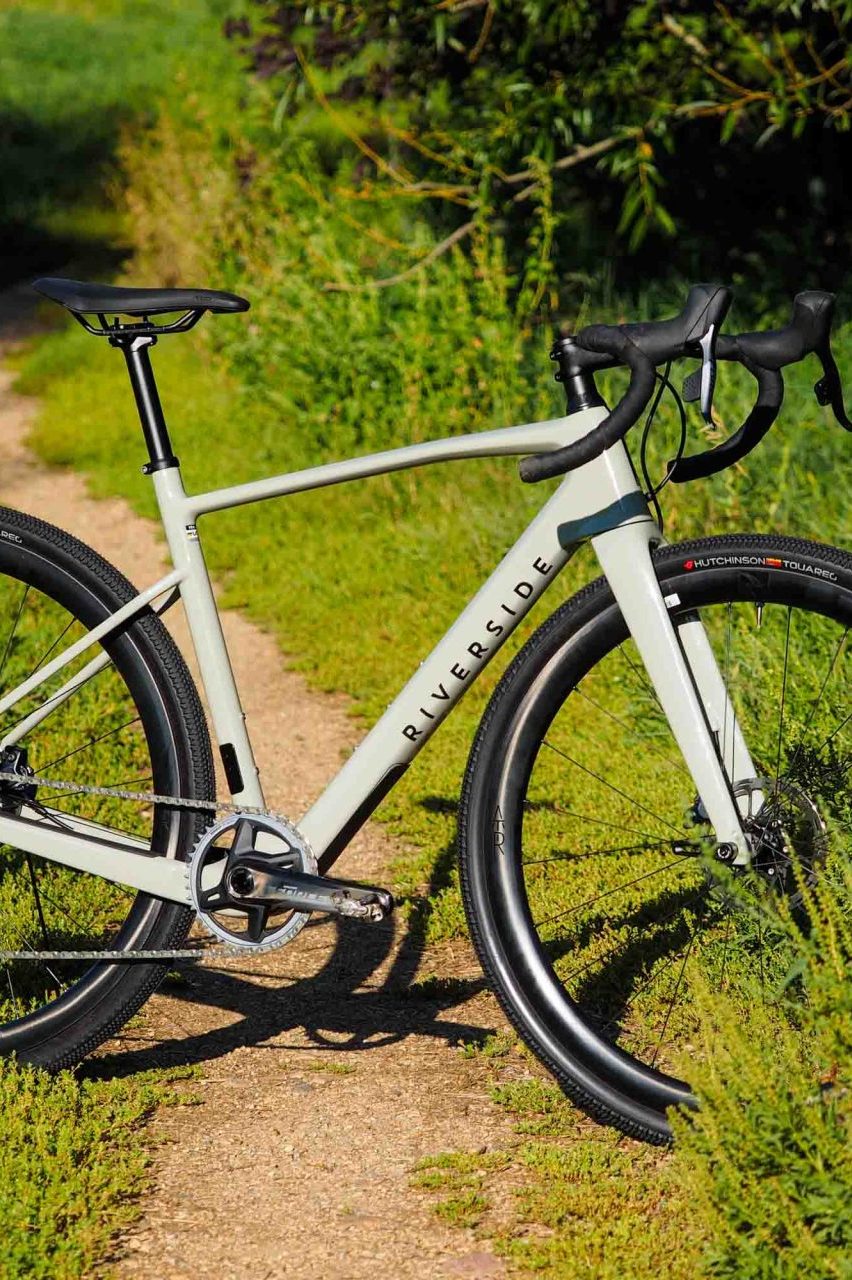French outdoor mega-retailer Decathlon has long been known for incredible value, and the brand is also steadily marching further into the higher end of the cycling spectrum with a growing range of more premium offerings. The newest member of the family is the Riverside GCR family of carbon fiber gravel bikes, and a few months of testing have proved it to be a solid performer with a go-fast feel, decent ride quality, smart geometry, and an attractive – if rather generic – aesthetic. It’s a perfectly reasonable option, but it doesn’t stand out from the crowd, and while it’s a good value in most of the world, American buyers can definitely do much better.
The short of it: Decathlon’s interpretation of a carbon fiber gravel bike built for speed.
Good stuff: Agreeable frame geometry, super efficient pedaling, good value (depending on where you are).
Bad stuff: Overly firm ride quality, generic styling, multitude of spec missteps, only four sizes, poor value for American buyers.
Meet Riverside
Decathlon sure does like its cycling-focused sub-brands. There were already no fewer than four under the corporate umbrella – Triban, Rockrider, Van Rysel, and BTwin – and Riverside now makes five. You won’t find any “Riverside” products on the main Decathlon web site, though; they’re featured on a seemingly separate site under the Decathlon Nature Cycling moniker. Moreover, the bike’s official name isn’t the “Decathlon Riverside GCR.” Decathlon is just the parent company; Riverside is the brand, and GCR is the model.
Yeah, I hear you. Your guess is as good as mine on that one.
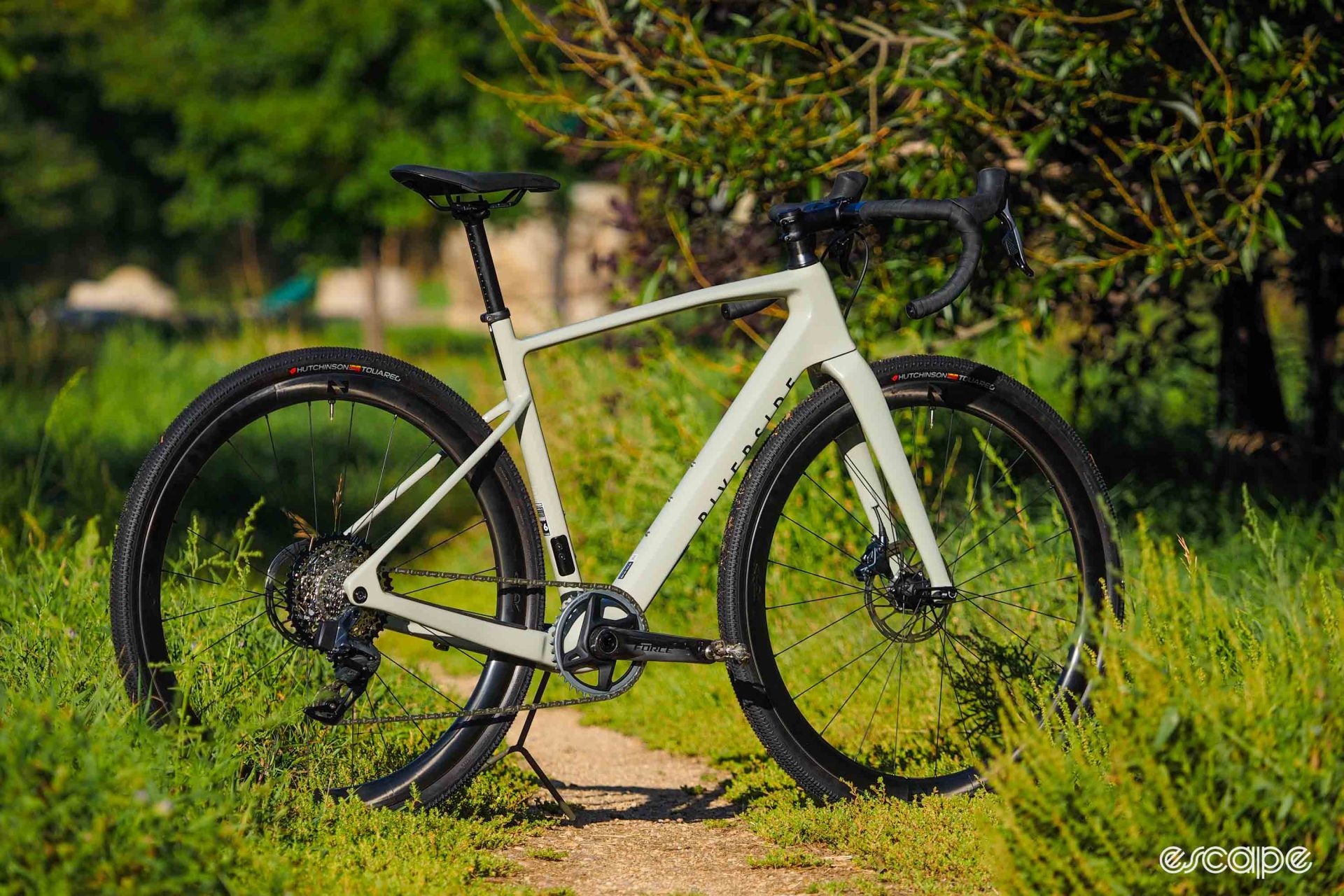
Regardless, Decathlon Riverside says the GCR is “for cyclists who love the faster, more competitive side of the sport.” The carbon fiber frame clearly prioritizes stiffness with a notably oversized down tube and head tube area, a stoutly reinforced press-fit bottom bracket shell connected to broadly set chainstays and flared main tubes, and subtly dropped chainstays that stay tall and fat almost all the way back to the dropouts.
The flattened top tube and dropped seatstays at least suggest some semblance of rider comfort, and Riverside has outfitted the GCR with a traditional 27.2 mm-diameter round seatpost instead of something bigger and stiffer. Aerodynamic efficiency apparently wasn’t a primary concern here as there’s no wind-cheating shaping to be found anywhere on the GCR.
Tire clearance is pretty average, with treads up to 700×42 mm-wide approved at both ends (though there’s a bit of wiggle room). Drivetrain clearance is passable, too, with room for just a 42-tooth single chainring, although there’s also room and fittings for a conventional gravel-sized double. Routing is (thankfully) only partially internal with ports on either side of the down tube for easy cockpit adjustments and headset servicing, but whether you go with a 1x or 2x setup, the GCR is designed for electronic drivetrains only.
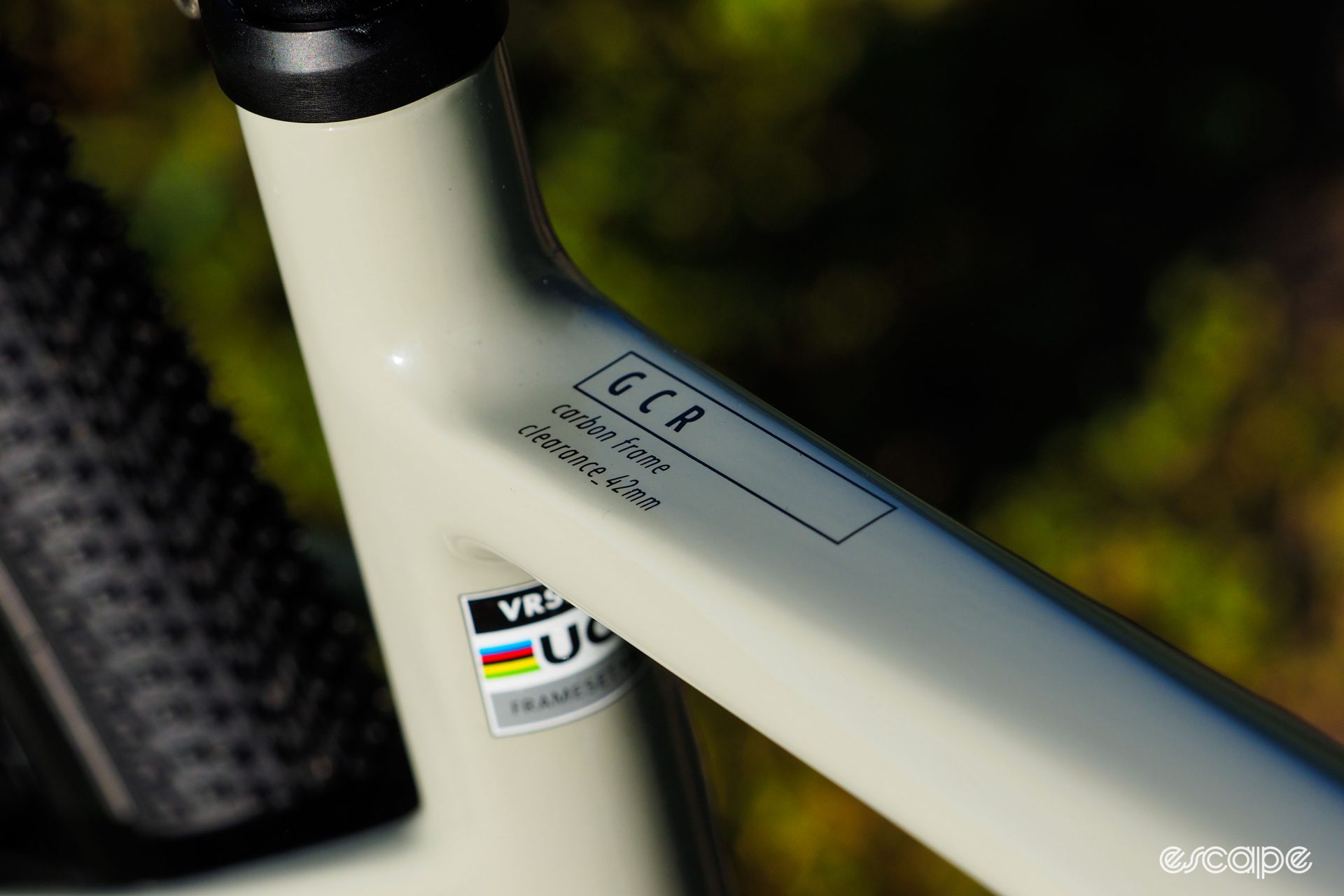
Riverside has outfitted the GCR with a thick chainstay guard to help keep things quiet, and there’s also a bolt-on plastic guard to protect the lower third of the down tube from rocks kicked up by the front wheel. Accessory mounts are pretty sparse, however, with two places for bottles inside the main triangle and … that’s it. There are no fittings for a third bottle, top tube bag, fenders, rear rack, or any other sort of bikepacking provisions should you decide to head into the woods for an overnighter. According to the marketing spiel, Riverside may want you to “expand your cycling playground!” with the GCR, but maybe don’t stray too far away from civilization, mmkay? And if you want to run a dropper seatpost, you’re limited to a RockShox Reverb AXS XPLR or some other wireless electronic model.
Geometry-wise, the GCR is somewhat unremarkable with just about every figure being about as middle-of-the-road as it comes. Not too long, not too short, not too tall, not too low, not too steep, not too slack. You get the picture. To be clear, there’s nothing wrong with using proven geometry, although it would be nice if Riverside had split the pie into smaller slices. The brand contends that riders from 1.56-2.00 m (5’ 1”- 6’ 6”) will be suitably accommodated by just four sizes.
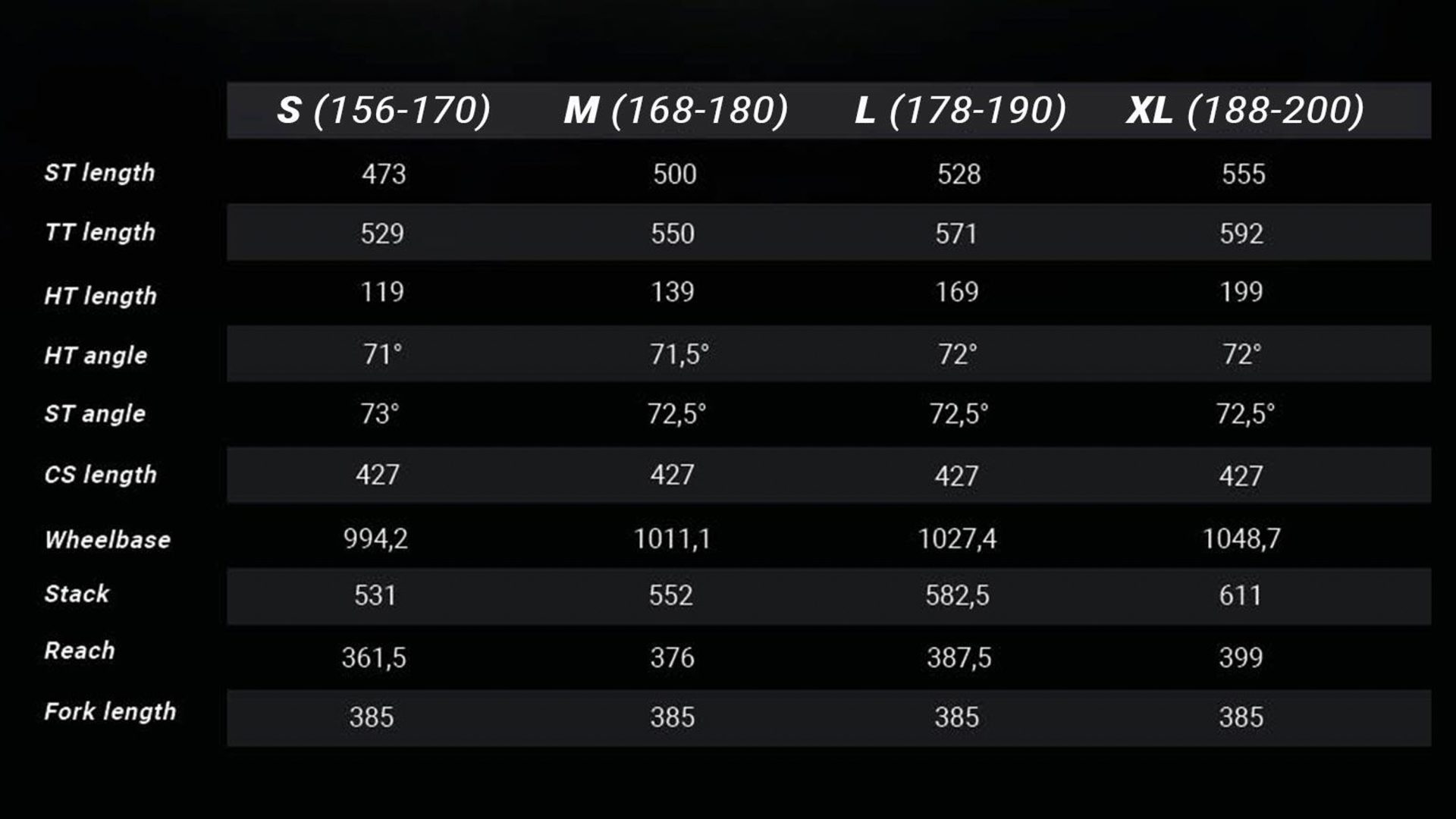
The GCR is more impressive on the scale. Claimed weight for a painted medium Riverside GCR frame is 1,058 g, plus 442 g for the matching fork – right inline with much of the high-end competition out there.
Riverside offers the GCR in two builds: the GCR Force comes with a SRAM Force AXS XPLR 1×12 wireless electronic groupset and Reynolds ATR carbon wheels for US$5,700 / AU$TBC / £4,000 / €4,000; and the GCR Rival comes with a SRAM Rival AXS XPLR 1×12 wireless electronic groupset and Fulcrum Rapid Red 900 aluminum clinchers for US$n/a / AU$TBC / £3,000 / €3,000. Both are topped off with house-brand aluminum cockpit components, Hutchinson Touareg tires, and a Fizik Argo saddle.
Riverside sent me a medium GCR Force model to play with for a few weeks, which tipped the scales at 8.47 kg (18.72 lb) set up tubeless, but without pedals or accessories – just about spot-on with the 8.25 kg (18.19 lb) claim on the product page, considering that figure is listed without sealant.
Both models are covered by the same five-year warranty for the frame and fork, and the GCR Force carries an additional two-year warranty for the wheelset plus lifetime coverage on the carbon rims.
Heading down by the river with the Riverside
Riverside says the GCR is “designed a lot like a performance road bike,” and it takes but a few hard pedal strokes to see how that translates in the saddle.
Not surprisingly given the tubing dimensions, the frame is highly efficient in terms of power transfer. There’s basically no flex to speak of down at the bottom bracket or up at the head tube, and so the GCR is quick to accelerate and handles very precisely, even when pushed hard on technical terrain.
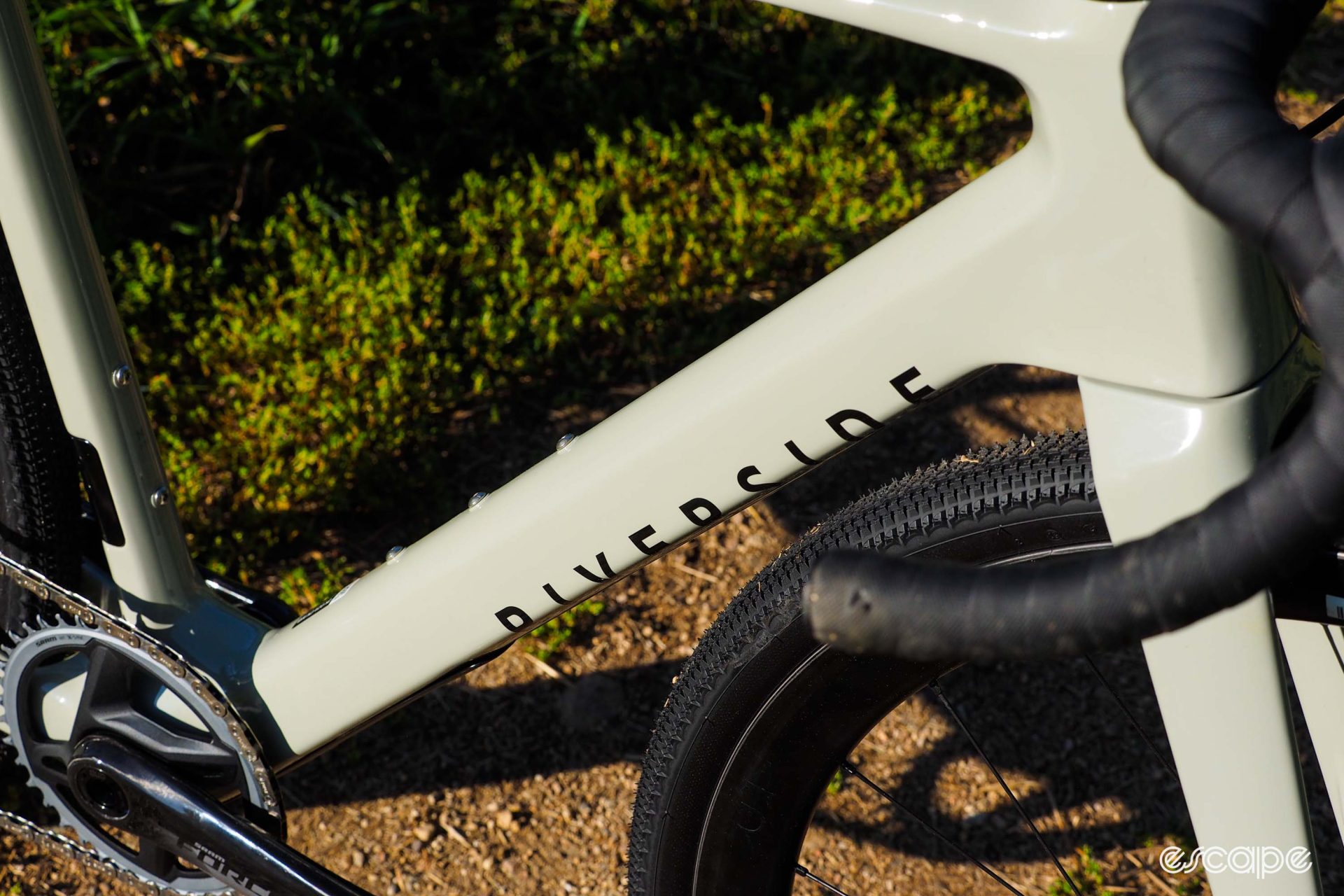
That stiffness comes at the expense of ride comfort, though, which the GCR is largely lacking. While the comparatively slimmed-down and dropped seatstays, the flattened top tube, and the conventional 27.2 mm-diameter seatpost hint at some cushiness, such relief proves elusive out on the road or trail. The ride of the GCR is unyieldingly firm both front and rear, and the chassis’ inherent stiffness is only further exacerbated by some of the spec choices (which I’ll discuss in more detail below).
Ride quality in general could certainly be better, as the GCR is missing that subtle bit of tuned flex that marks livelier and more entertaining options out there.
Overall Decathlon/Riverside seems to have gone after stiffness above all else here, which might be nice in terms of that initial reaction when you stomp on the pedals. But while such absolute rigidity may translate into speed in the minds of some, that argument quickly falls apart on rougher courses where that level of harshness will more likely just make you tired.
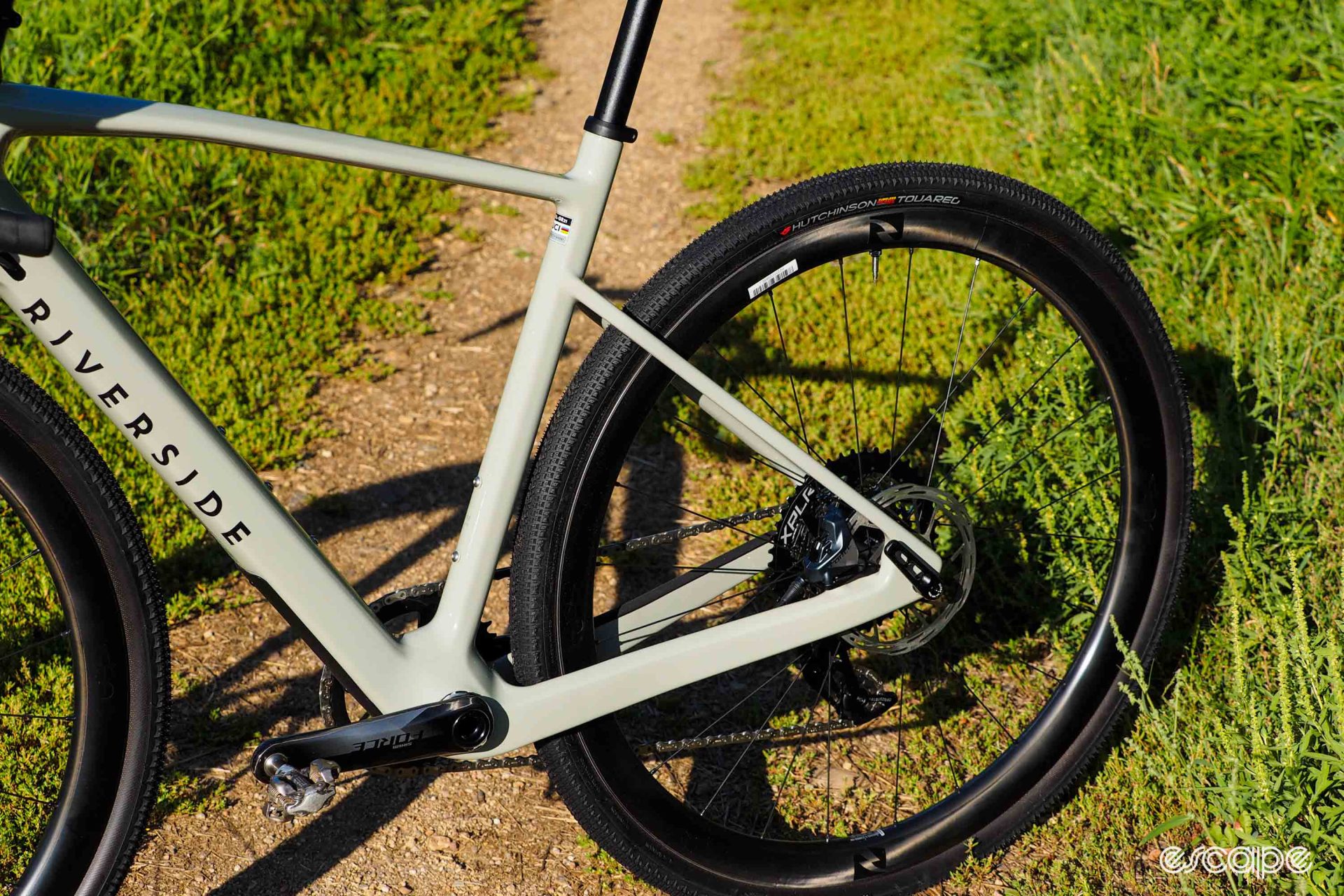
Riverside has done a pretty good job with the GCR’s handling, though. It leans more toward the traditional end of the spectrum with its slightly shorter front center and wheelbase and somewhat steep head tube angle – not unlike a ‘cross bike, in fact, albeit with a touch more stability. As such, it’s not as settled ripping through looser or more technical bits of trail as something with more progressive geometry, and toe overlap was a problem (at least for me). But it nevertheless feels at home in average terrain, and makes quick work of tight, successive corners. And on tarmac, it also doesn’t tend to drift toward the outside of fast, downhill bends as is often the case with longer and slacker setups; just point and shoot.
However, considering the supposed performance bent, the riding position of the GCR strikes me as somewhat upright, and without resorting to a more aggressively angled stem, racers will likely find the tall stack challenging in terms of achieving a suitably aero posture.
Arguably more frustrating is the GCR’s lack of versatility given the bike’s only somewhat convincing bid to be a gravel race bike. The 700×42 mm tire clearance is good, but not great, and similarly, the maximum 42T chainring size (for 1x drivetrains) might not be enough for stronger riders on flatter and faster terrain. And the dearth of mounts is just head-scratching.
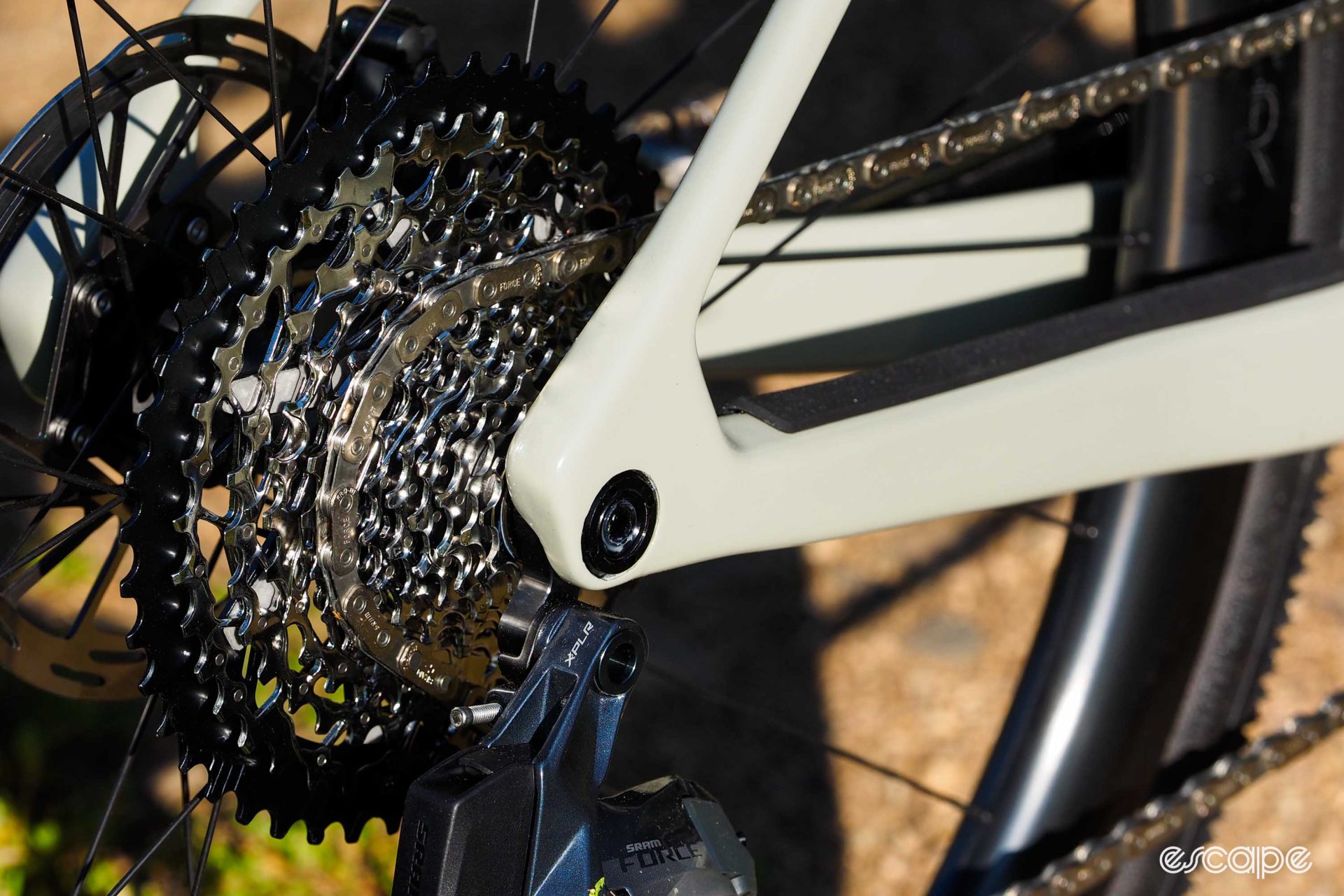
Riders relatively new to gravel who are mostly looking to blast around on unpaved surfaces for a couple of hours at a time will likely be satisfied with the GCR, but there doesn’t seem to be enough room to grow outside of that. It’s too stiff to be comfortable for longer rides or races, and it doesn’t have provisions for carrying the gear you’d need for even a casual all-day adventure.
Build kit breakdown
Riverside’s product manager made some pretty good decisions when outfitting the GCR Force, but there’s still a lot of room for improvement.
I’ve had nothing but good experiences to date with SRAM’s Force AXS XPLR 1×12 wireless electronic groupset. Shifts are reliably smooth and precise, the eTap shift lever logic is unquestionably the best around, and the 10-44T cassette offers plenty of range for most typical gravel applications. With proper care, the chain and cassette will last for ages, too.
Similarly, the disc brakes serve up their usual reliable performance. Although I’d prefer a lighter and snappier lever action, there’s nevertheless plenty of power and excellent control, and about the most generous pad clearances you’ll find from any major component brand.
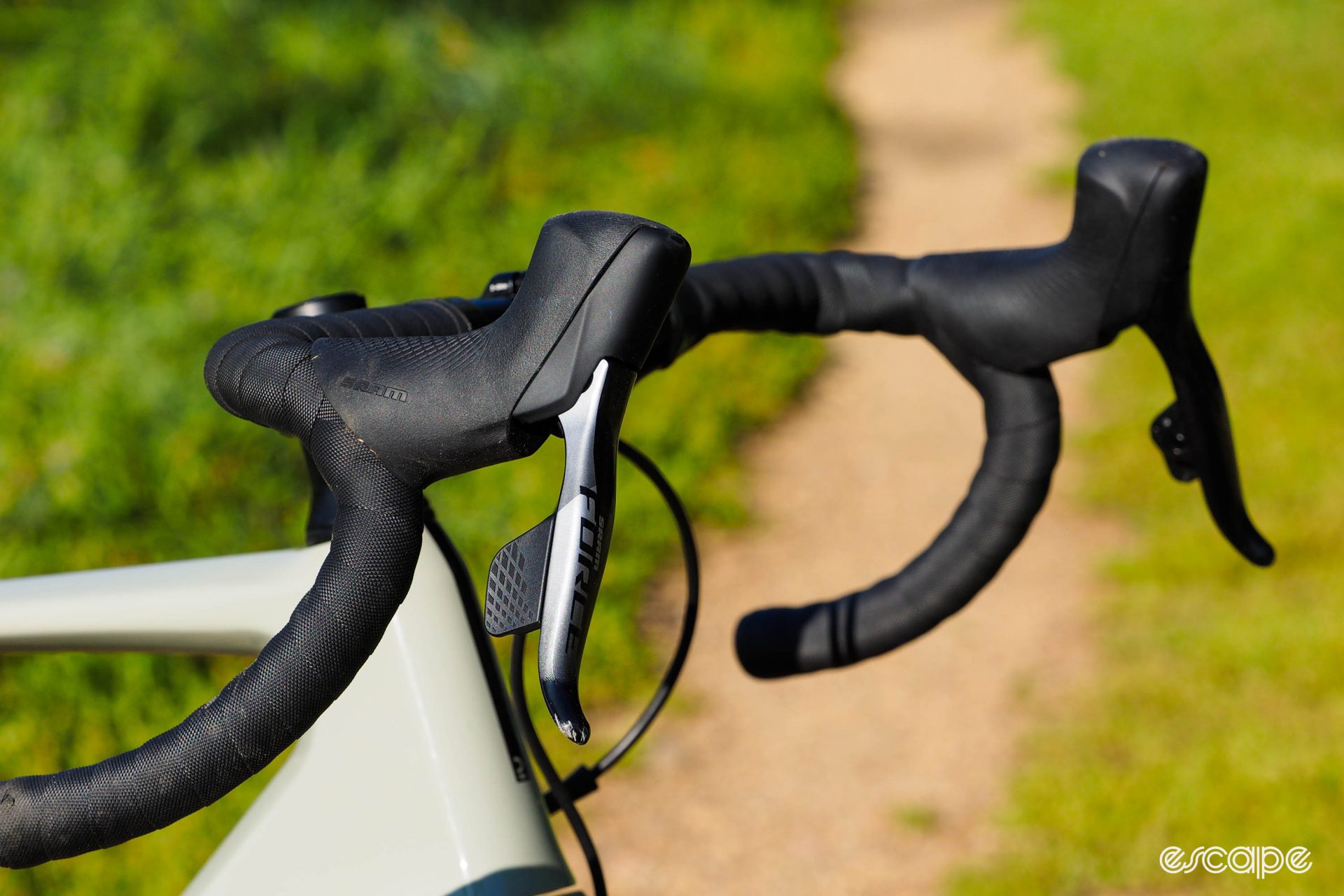
Ergonomics-wise, I still quite like the more-bulbous shape of SRAM’s first-generation levers as the pronounced top provides a generous hold for your hands. However, the fact they’re here at all is confusing considering SRAM introduced an updated version months ago, and yet the brand-new GCR still uses the older stuff. Riverside said my sample was from a run of bikes produced in January (before the SRAM release), and prospective buyers should received bike with the current-generation stuff.
Things look better when it comes to the rolling stock. The Reynolds ATR wheels are built with the same semi-aero carbon fiber rims as the company’s nicer ATR versions, but with heavier spokes and a more basic set of hubs that are better suited to OEM equipment on a mid-range bike. The 23 mm internal width is a hair narrow by current standards, but still provide good casing support for the GCR’s average-sized tires. And although those hubs might not sport a fancy brand name (Reynolds’ higher-end stuff is supplied by Industry Nine), the 10° engagement speed is quick enough for the application, and the simple pawl-type mechanism is low-friction and easy to maintain.
I can’t say I’m a huge fan of the Hutchinson Touareg tires. They offer pretty good grip in a range of dry conditions (I didn’t have a chance to try them in mud, although they clearly wouldn’t work well there), but they’re tangibly slow-rolling and the casings are stiff and lifeless. When combined with the inherently rigid GCR frame, the result is a rather uncomfortable feel that only feels more punishing as the hours tick by.
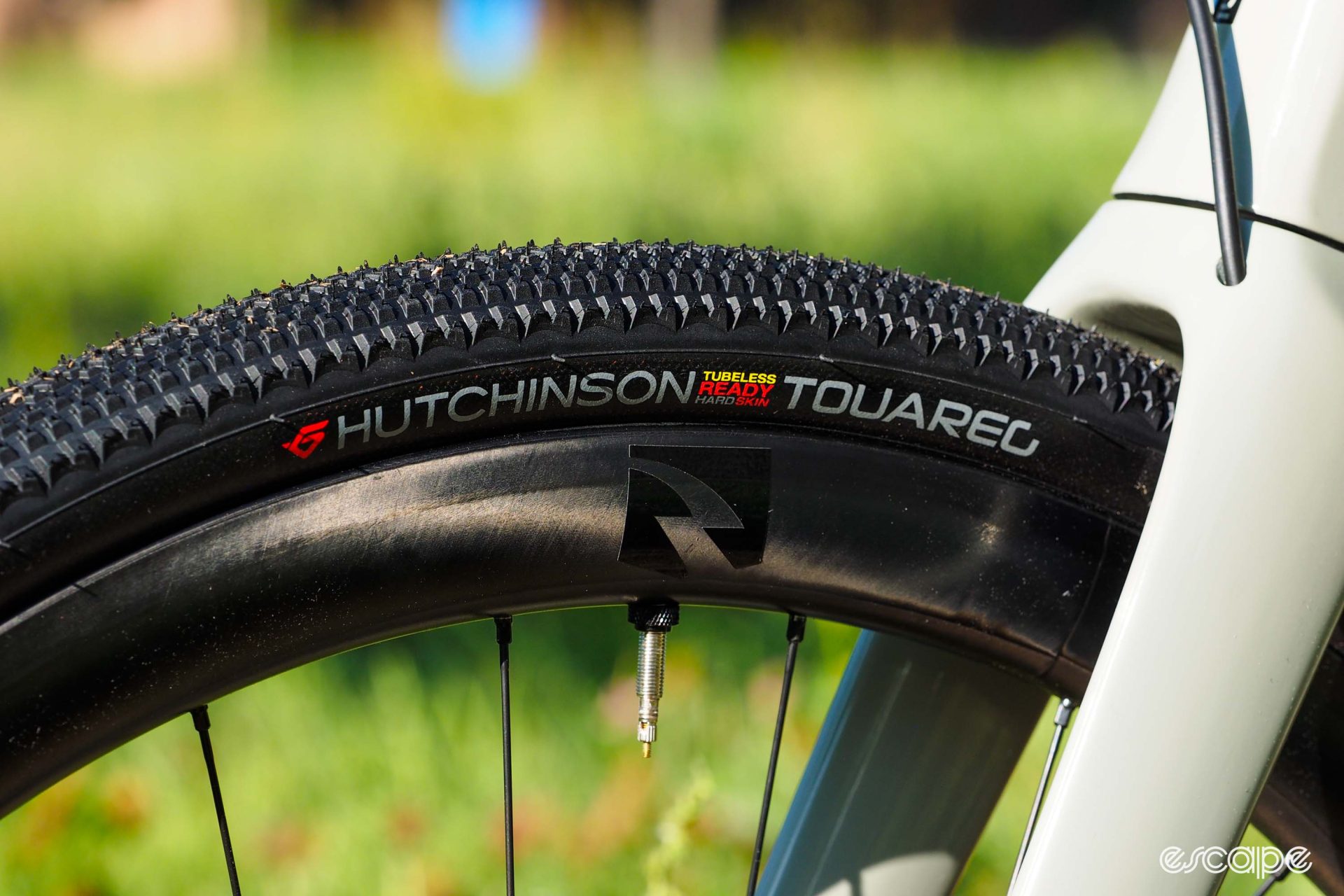
The Fizik Argo saddle is plenty cushy, though, and the forged aluminum stem gets the job done. But I’m confused why that saddle is mounted to such an excessively long aluminum seatpost. According to the specs, my medium-sized tester should have arrived with a 350 mm one instead, but even that would be longer than it needs to be given the moderate top tube slope. Perhaps Riverside just wants to accommodate a wider range of saddle heights per frame size? Maybe, but all that extra length is also unnecessary weight, and the relatively thick walls only contribute further to the rough ride.
The handlebar bend, however, is just doesn’t make a ton of sense for this particular application. The modestly flattened tops, subtle flare, and semi-ergonomic bend feel good in your hands. Even the bar tape is impressively grippy and has a decent amount of padding. But the drop dimension would be considered unusually deep for a road racing bike, let alone a gravel setup.
The upsides and downsides of consumer-direct
I don’t usually comment too much on the build quality of bikes sold through more traditional channels since they’re usually assembled by a (hopefully) qualified mechanic at a shop, but Riverside’s consumer-direct model warrants further discussion.
As is the case with any bike delivered in a box straight to your doorstep, the Riverside GCR is supposed to be basically ready to run with just a few small steps required to get it ready to go. According to Riverside, each GCR is “fully assembled on a stand by the same person at our B’Twin Village plant in Lille, France,” and “each person is committed to ensuring the quality of every bike they assemble.”
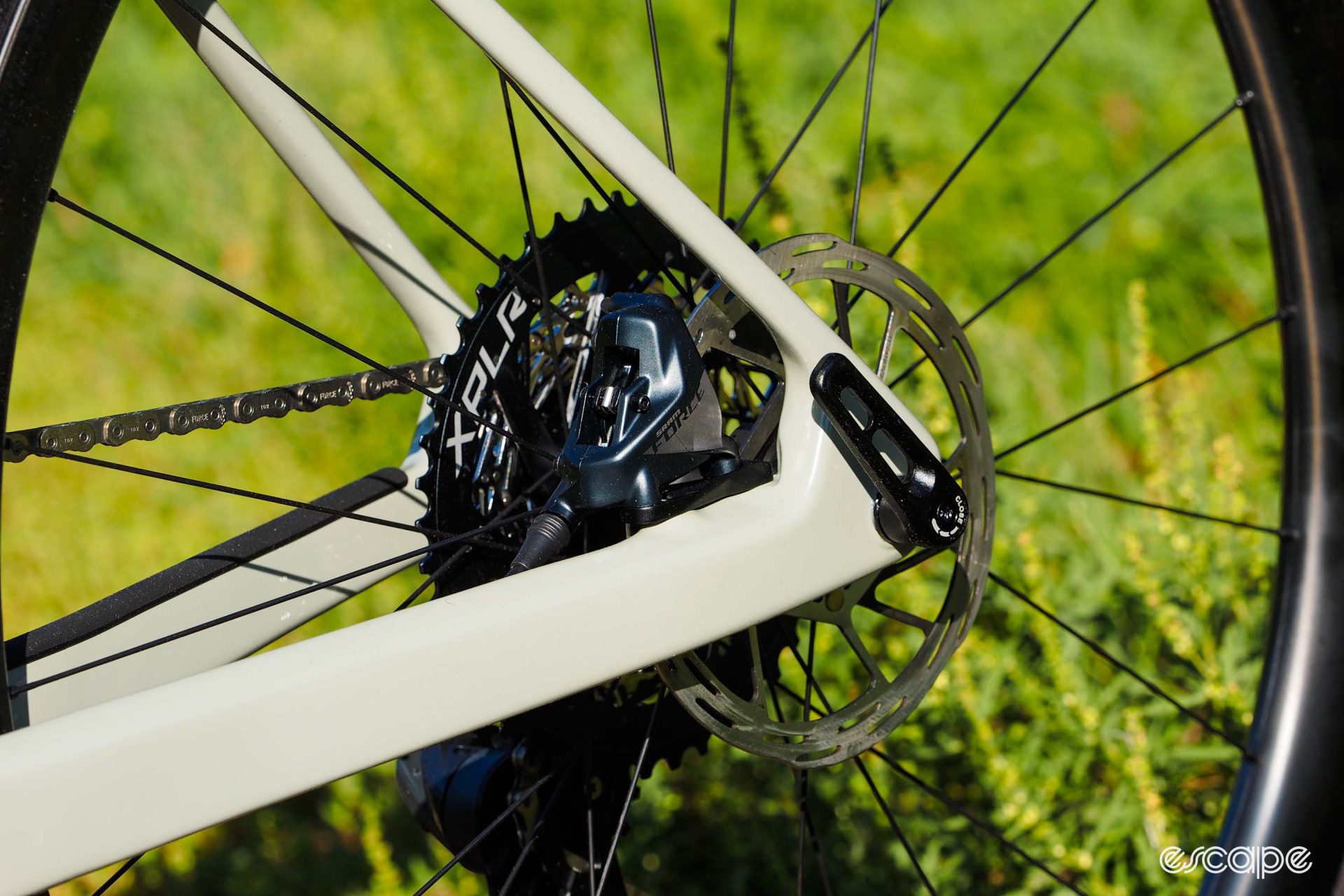
That may be, but the assembly quality of my sample still left a bit to be desired. The rear wheel required a fresh wrap of tubeless tape since the original stuff had migrated into the center channel, likely during tire installation (sorry, Riverside, but this rear Reynolds wheel now has a bunch of sealant inside the rim cavity). Both brakes were also rubbing on the rotors, although in fairness, the tech may have done the best they could given the tabs really needed to be faced at both ends – an issue that afflicts nearly every brand, but one that’s still no less annoying.
Anyone purchasing a Riverside GCR will receive a six-month tune-up at no charge, but only if you bought it at a physical Decathlon dealership. Otherwise, you’re on your own.
The bike itself at least packed with minimal shipping materials, and much of what is there is recyclable. Riverside also includes a basic twist-type torque wrench and friction paste to aid in the final home assembly, and a bottle of Hutchinson tubeless sealant and the requisite valves are included, too.
A perfectly ok bike, but the pricing is perplexing
I’m a big fan of well-designed consumer-direct bikes as they typically offer excellent performance with far better value than ones offered through more traditional business models. All in all, the Riverside GCR Force isn’t a bad bike. It’s quick under power, the handling is fine, and it looks pretty good.
But it’s lacking in the sort of refinement you’d find from a more established premium brand with more development experience, and there are a few significant missteps with the spec. Those sorts of things could often be overlooked if they came with a bargain price, and in certain markets, it delivers just that so I can see how the GCR might land on some buyers’ short lists. However, the Riverside’s pricing is more inconsistent than I’ve come to expect from other bikes produced under the Decathlon corporate umbrella. In particular, the US pricing is disproportionately much higher, so much so that it doesn’t take much of an in-depth search to see how thoroughly outclassed the Riverside is there compared to other carbon fiber gravel bikes with a SRAM Force AXS groupset.
In the US, the Canyon Grail SLX 8 AXS is less expensive, offers a vastly superior frameset and more premium (not to mention more cohesive) spec, and is offered in seven sizes instead of just four. Sticking with consumer-direct brands, there’s also the Fezzari Shafer, built around a progressive carbon fiber frame that can be highly customized during the ordering process, and yet still undercuts the Riverside by hundreds of dollars. And then there’s the Trek Checkpoint SL 7 AXS. It’s a bit more expensive, but only barely, and yet it comes with a superior ride quality, heaps of additional versatility and utility, and the peace of mind that comes with a network of physical brick-and-mortar stores.
In most markets, the Riverside GCR is a reasonable value option. But even in those regions, the rough ride and so-so finishing kit make it more of an also-ran in my book, and that just doesn’t cut it among this incredibly competitive landscape.
More information can be found at www.decathlonnaturecycling.com.



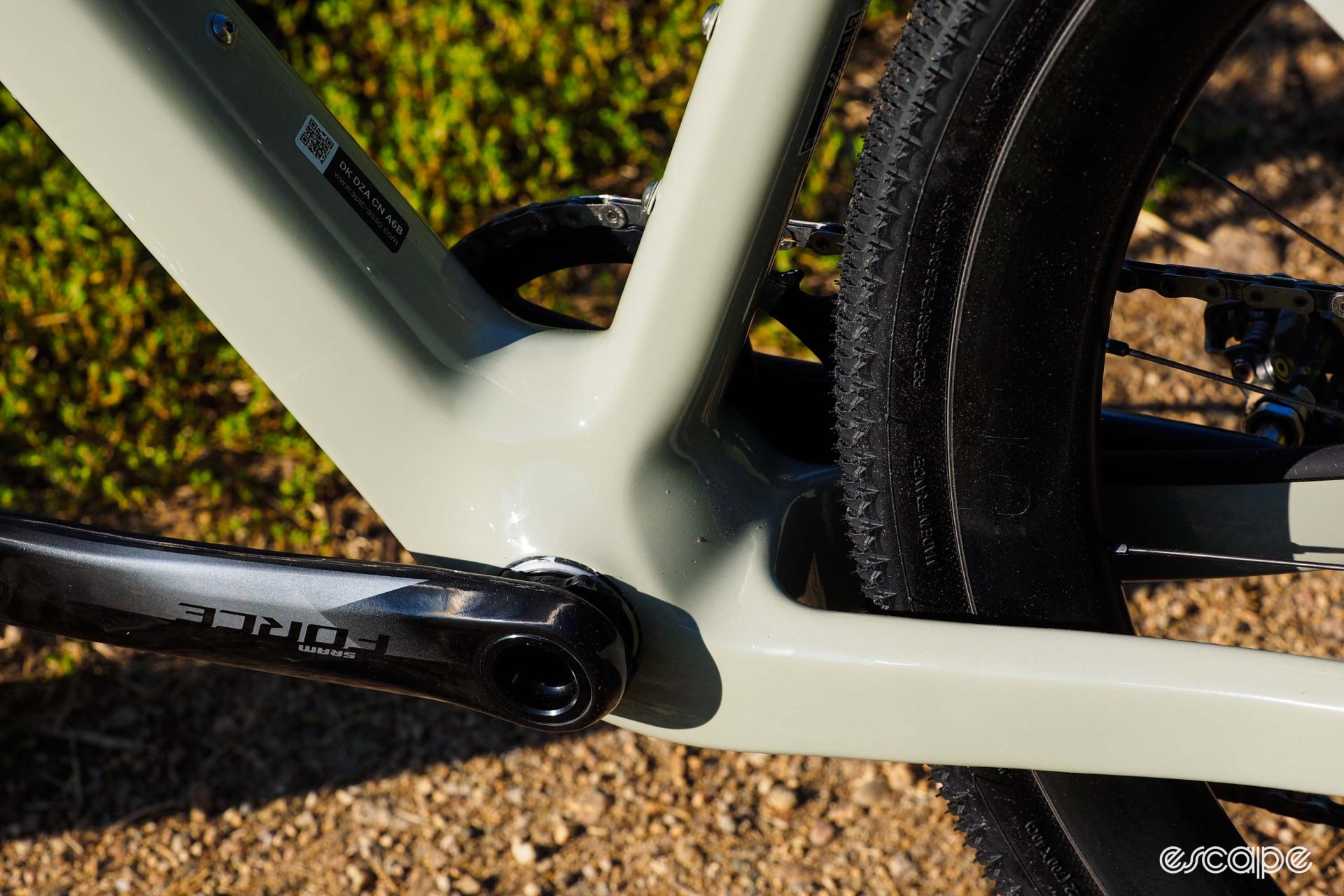
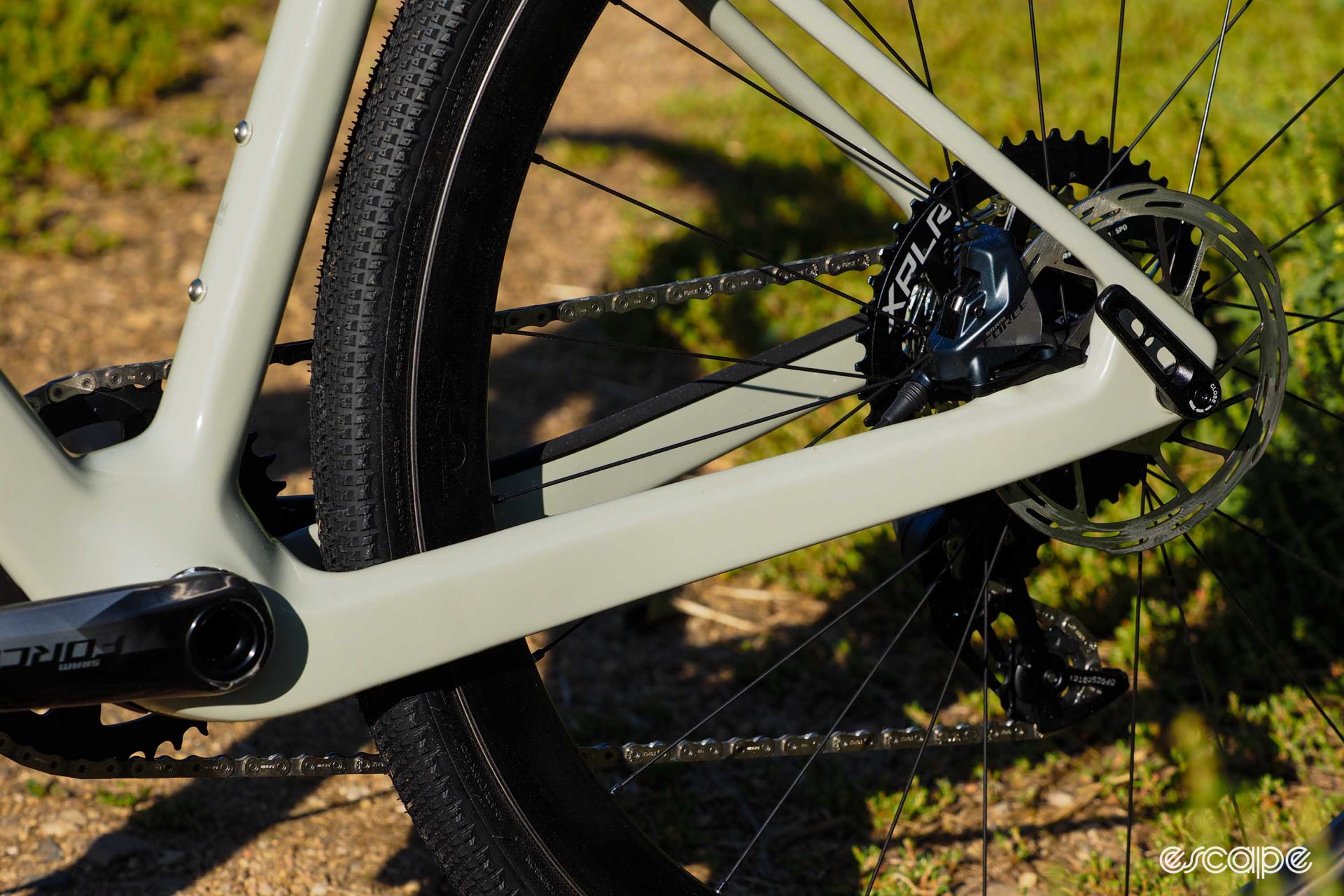
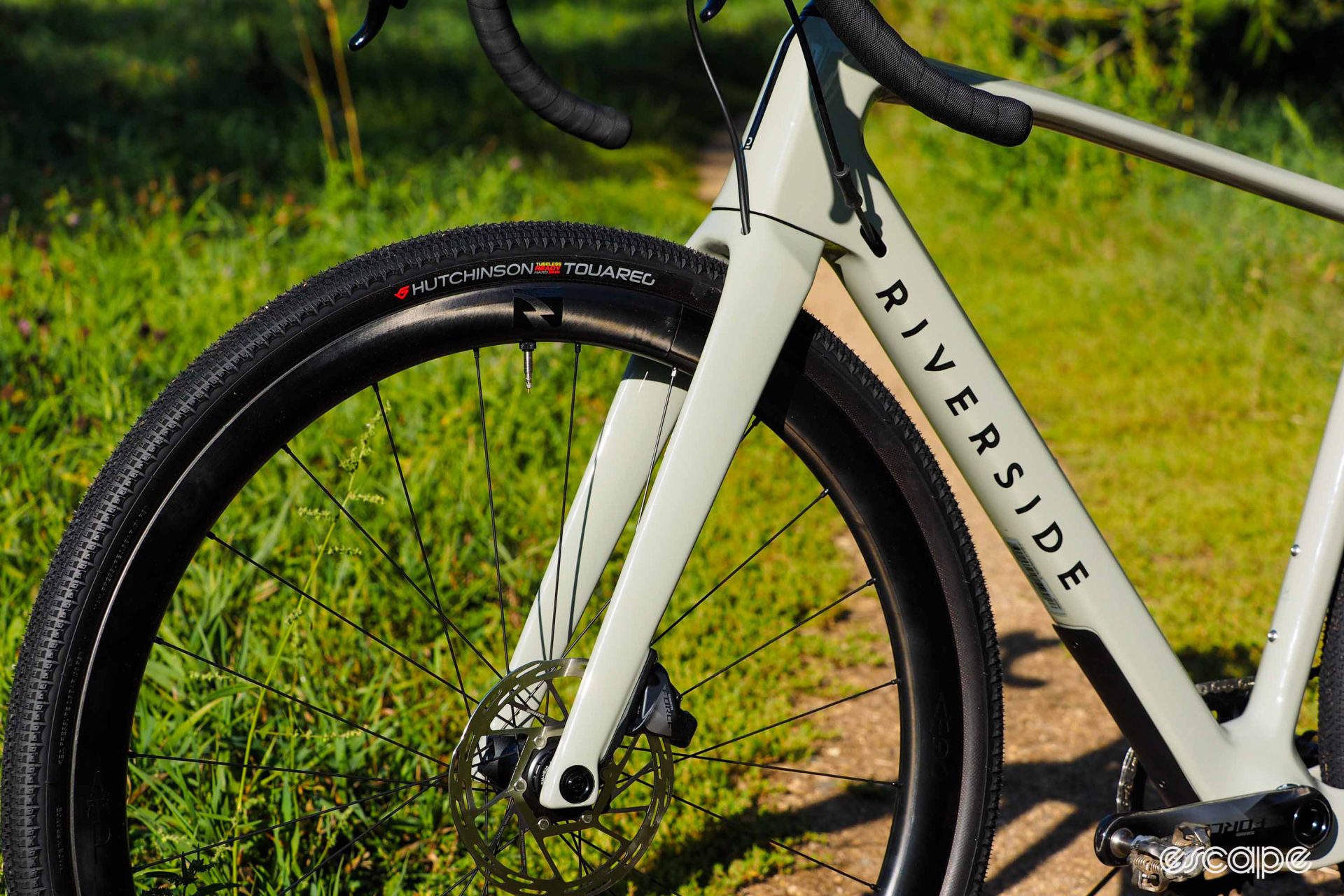
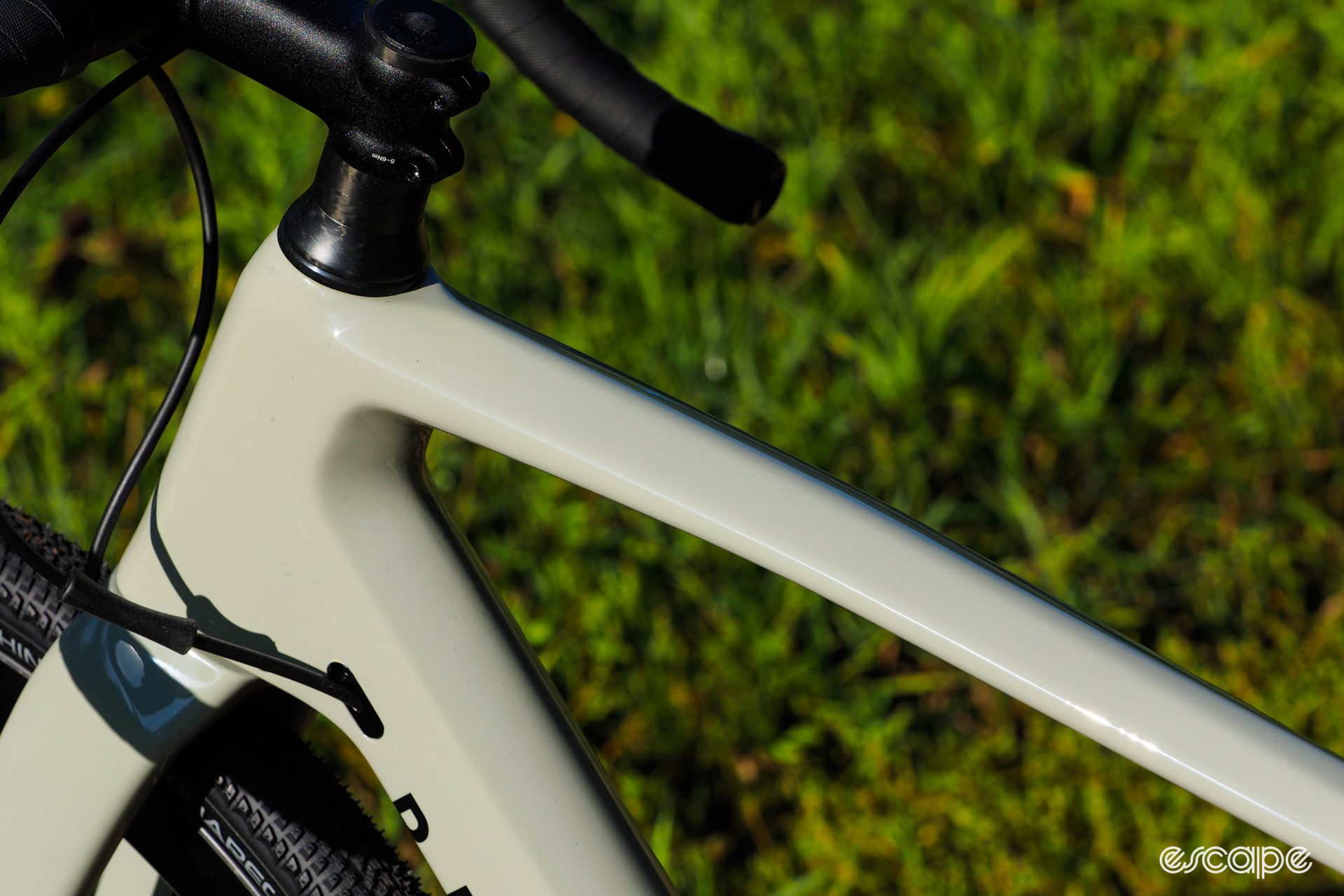
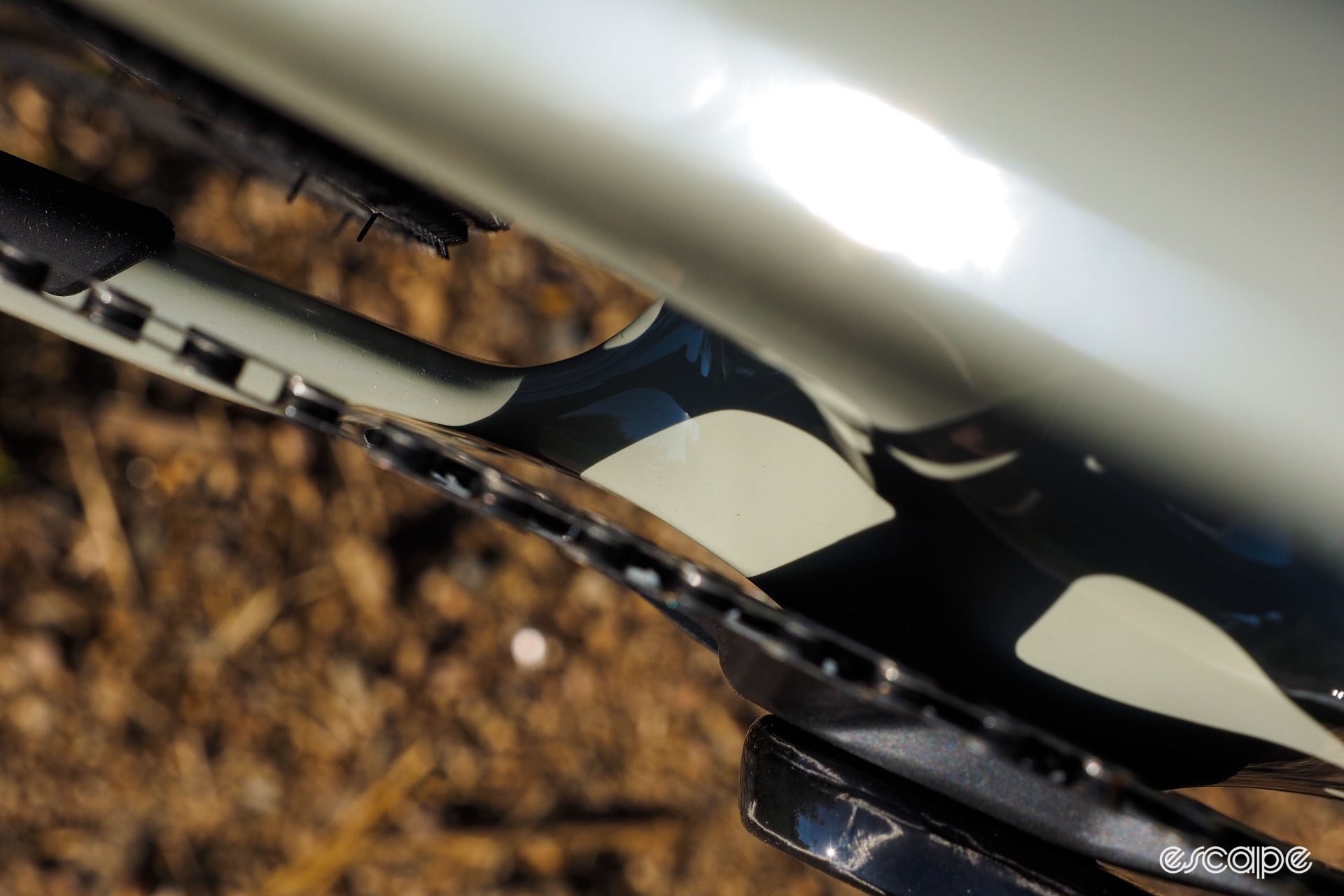
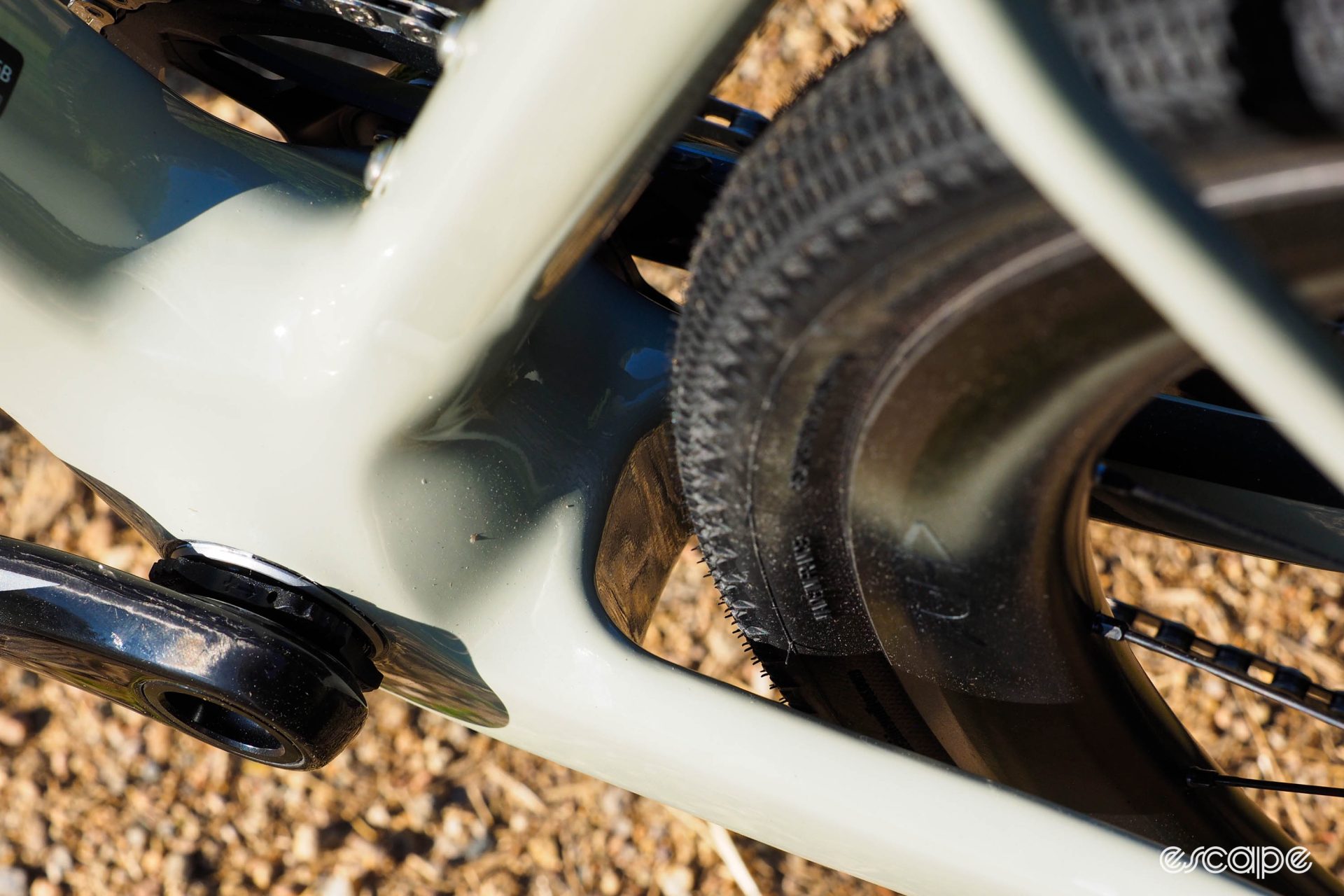
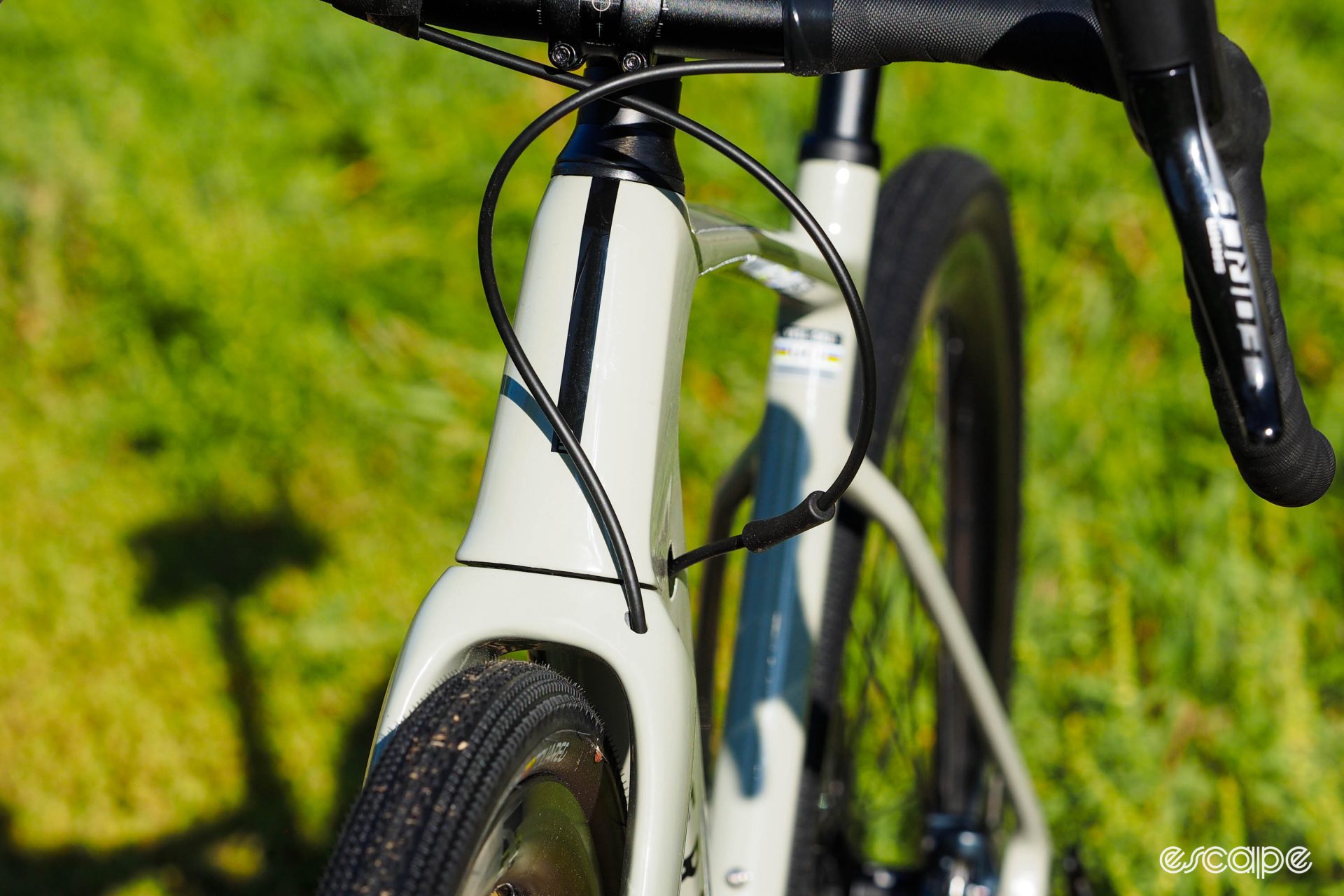

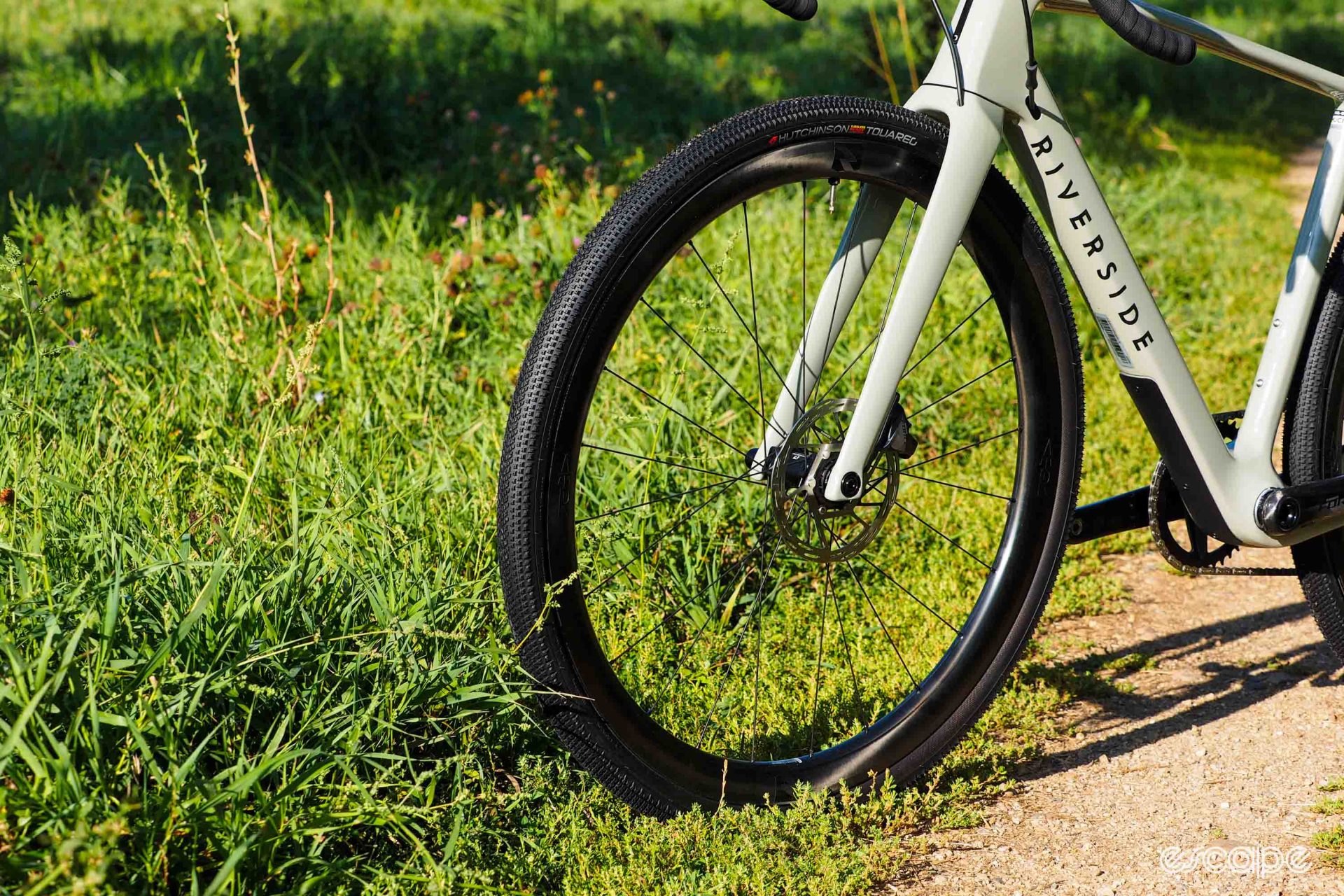
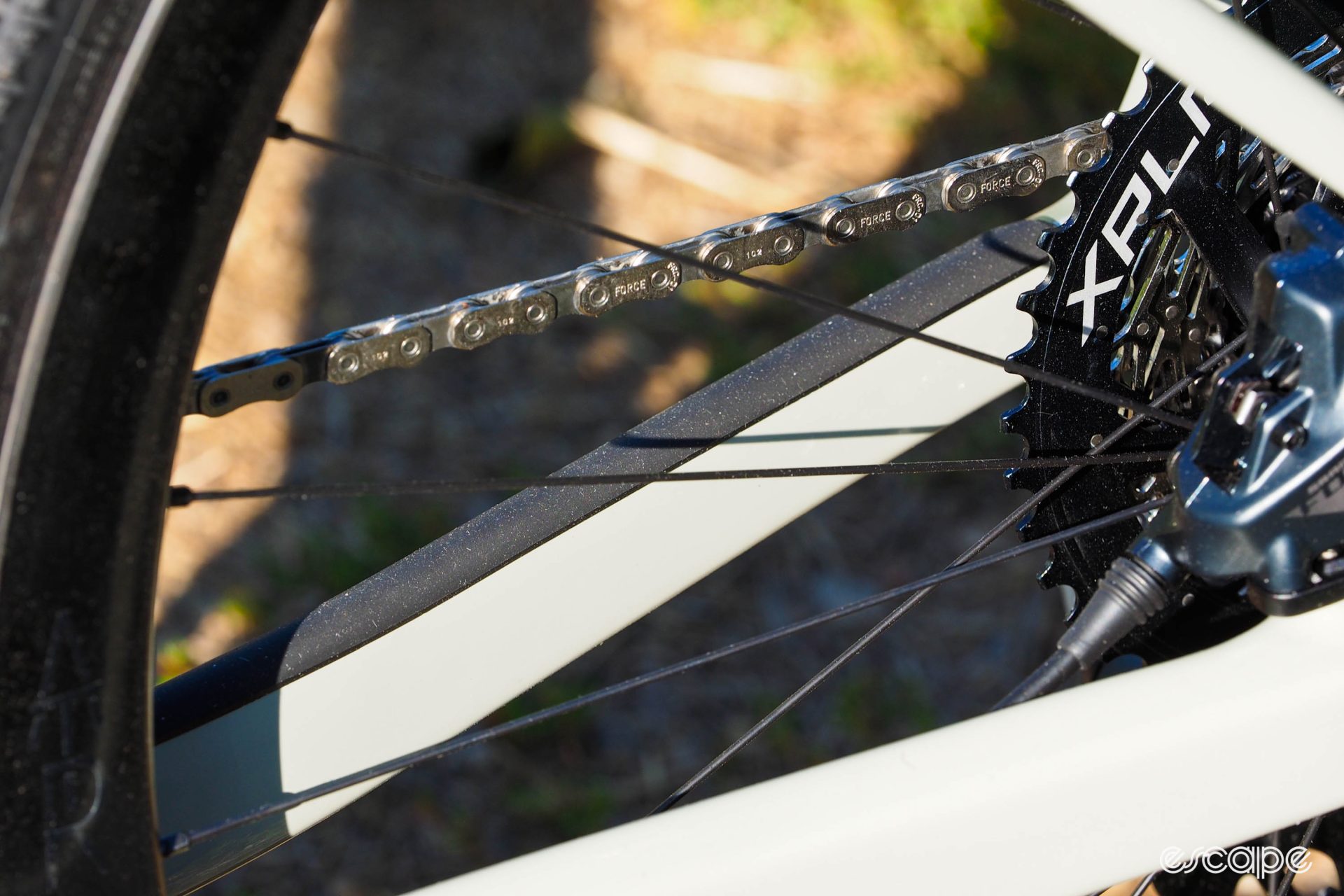
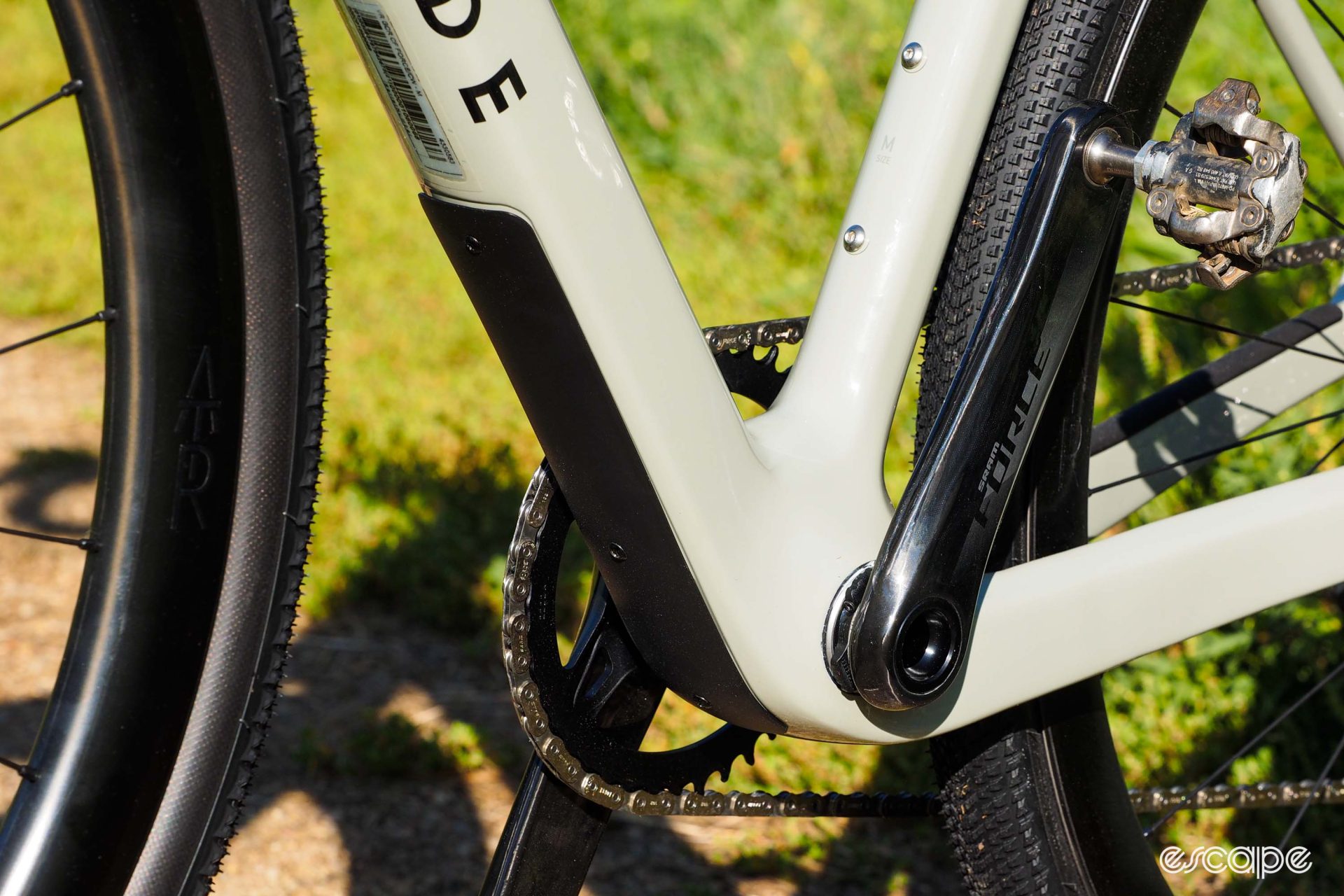

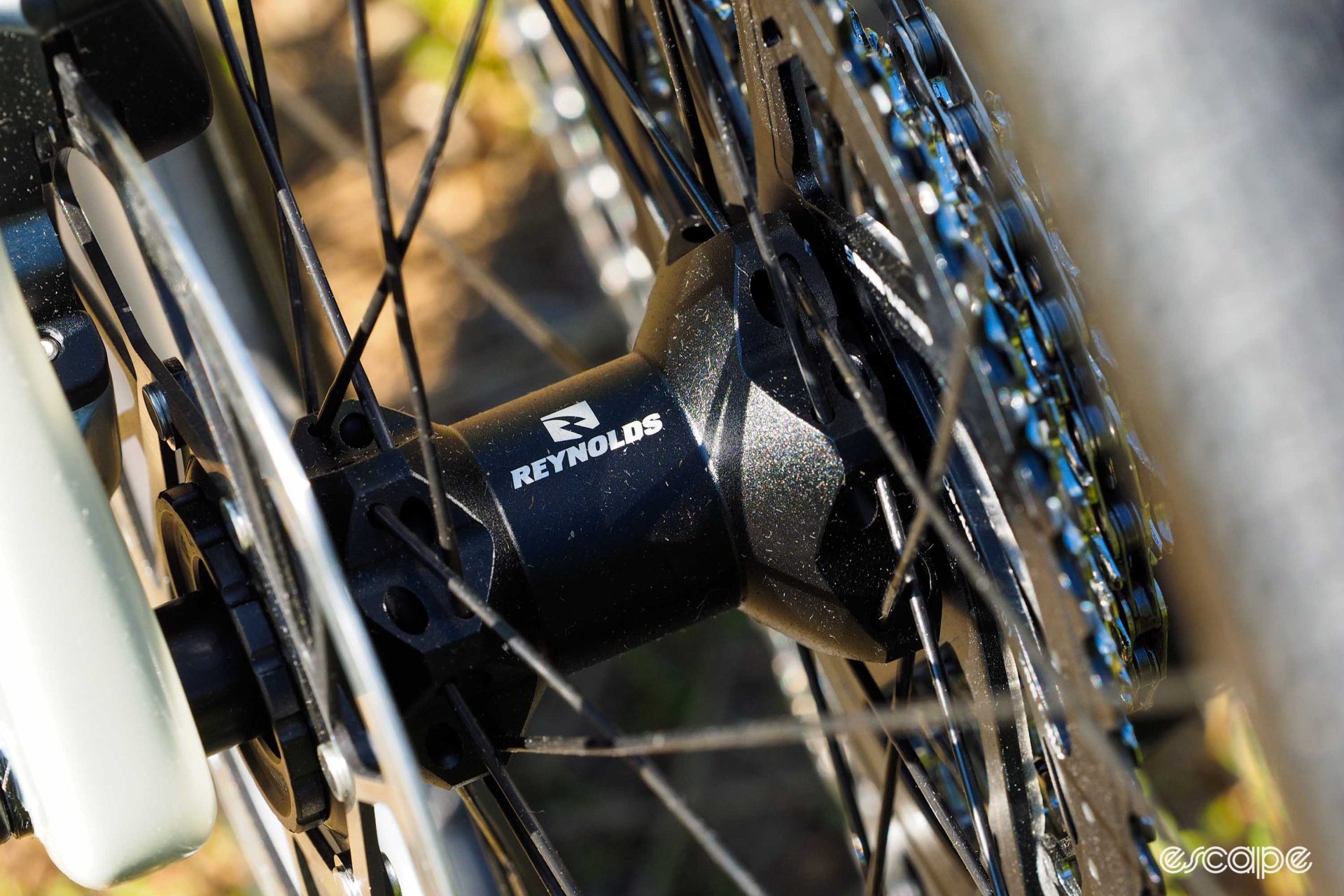
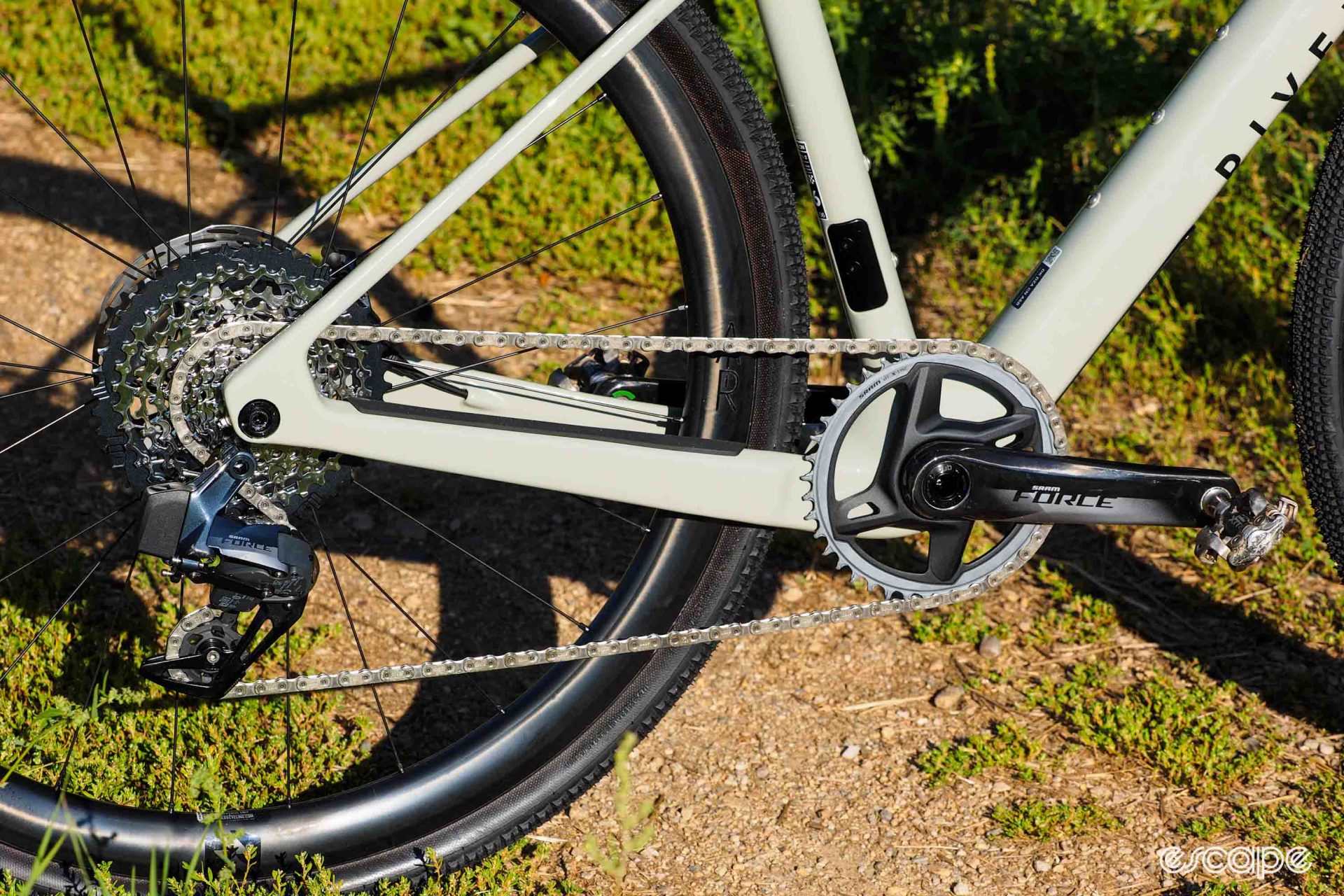

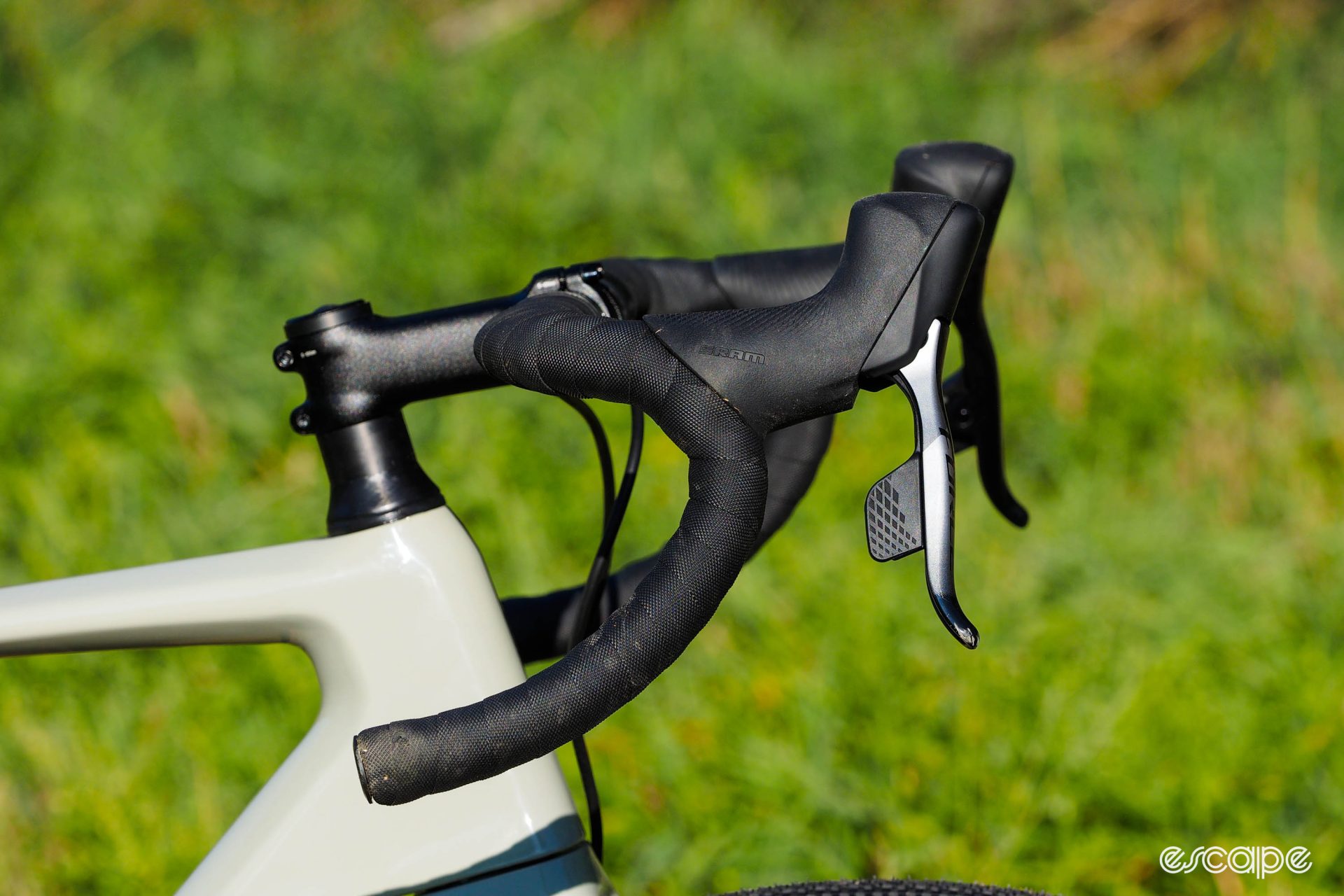
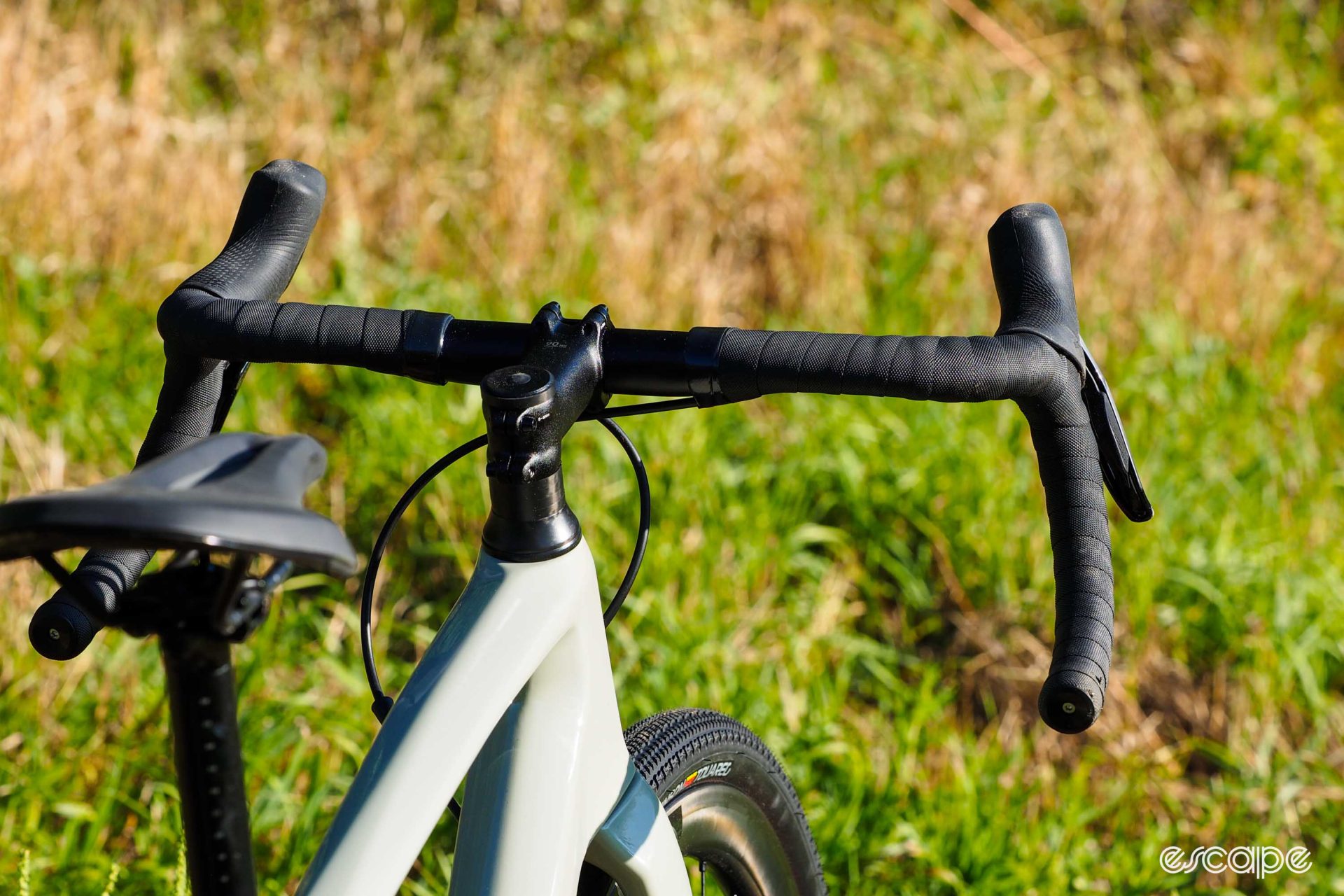
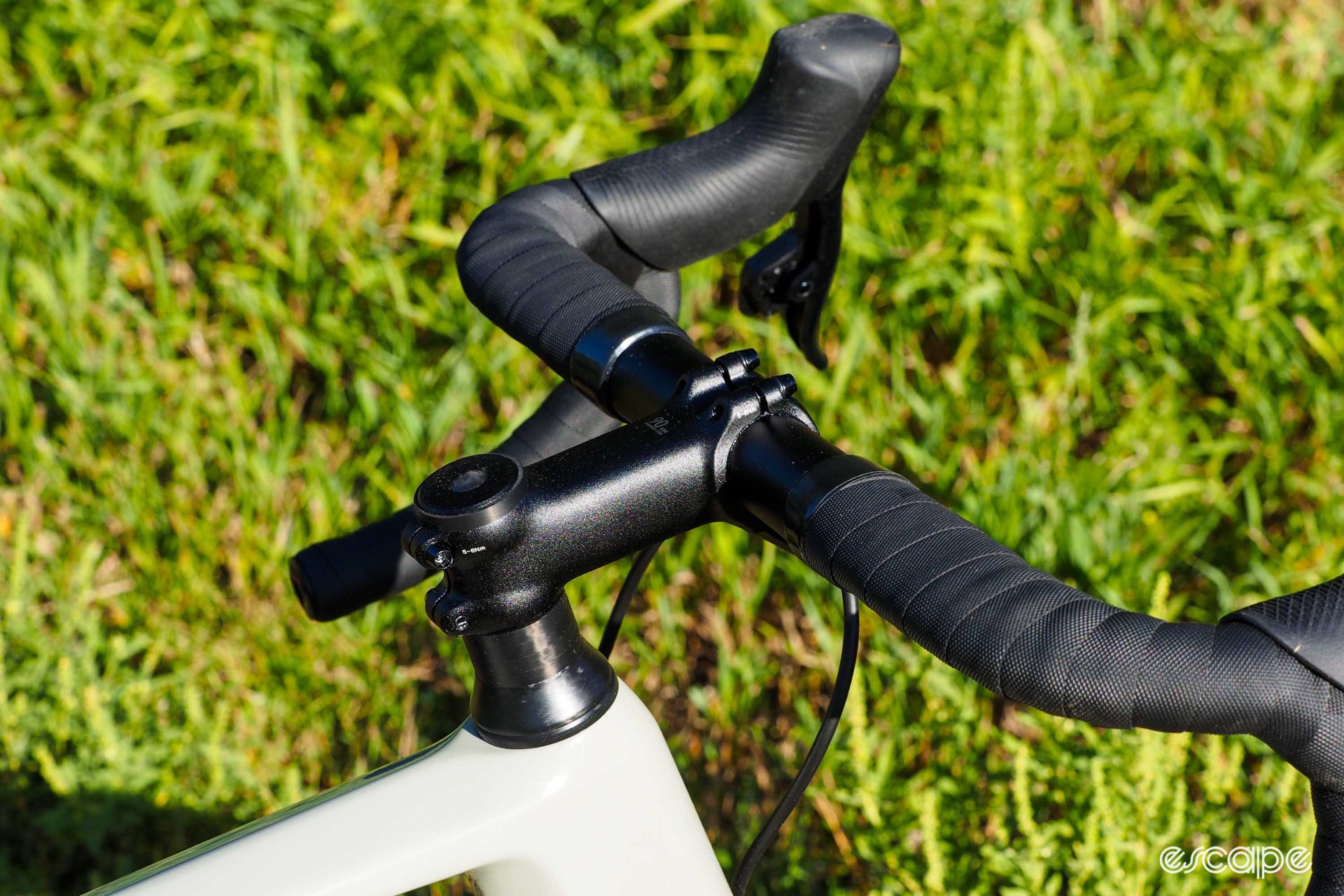
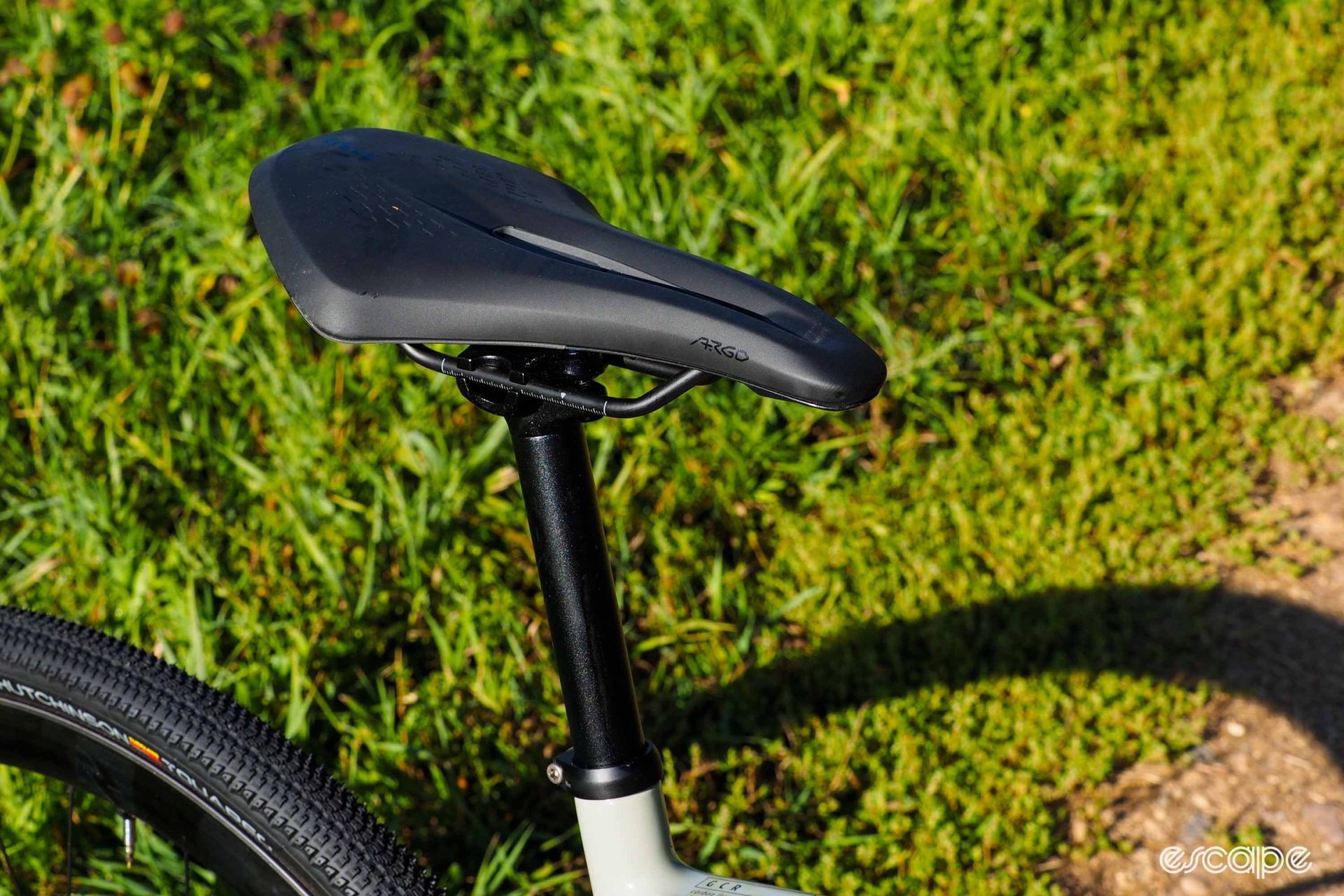
What did you think of this story?

